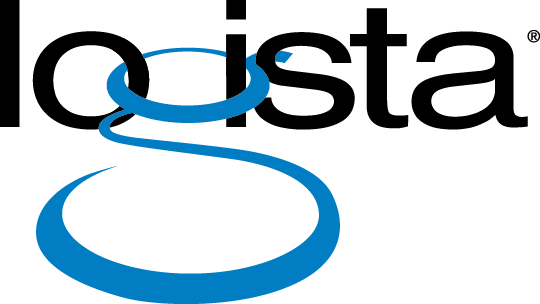Walk into any medical practice, and you’ll find paperwork. Charts, insurance forms, consent documents, lab results, prescriptions. Behind every patient visit is a mountain of documentation. But what happens when that paperwork becomes a roadblock instead of a resource? For many healthcare providers, outdated document systems are undermining the very thing they’re there to support: patient care.
Healthcare providers have to juggle growing patient volumes, tighter compliance requirements, and rising expectations for digital access and coordination. With so many priorities competing for attention, document management often gets overlooked. But it plays a central role in how healthcare teams work; affecting everything from daily routines to communication across departments. When handled well, it not only keeps things running smoothly, but also strengthens the connection between patients and providers.

Document management doesn’t often make headlines. But it’s foundational, and when it works well, it makes a noticeable difference in how patients are treated, how quickly they’re diagnosed, and how confidently they’re cared for.
Let’s explore five ways smarter document handling can elevate patient care in the day-to-day experience of both caregivers and the people they serve.
1. Faster Access Means Faster (and Better) Care
Can your team find what they need when they need it?
A patient walks in complaining of chest pain. The doctor suspects a recurring issue and wants to check their past EKG results. If those records are buried in a paper file room or scattered across different systems, precious minutes are lost. Multiply that delay by dozens of patients a day, and the impact adds up quickly.
A well-designed document management system solves this problem. By centralizing records, indexing them intelligently, and making them securely accessible to authorized staff, clinicians can pull up a complete medical history in seconds. When providers have timely access to data, they can make quicker, better-informed decisions, start treatments sooner, and avoid costly missteps.
From the patient’s perspective, it builds confidence. There’s reassurance in seeing your doctor review your full history in real time, not shuffle through papers or try to recall what happened at your last visit.

2. Reduced Errors, Fewer Risks
Even the most competent professionals can be tripped up by missing forms, illegible handwriting, or outdated files.
Simple miscommunication can lead to duplicate tests, missed allergies, or incorrect medication dosages. A good document management system, especially when integrated with an electronic health record (EHR) system, reduces that risk by creating a single, reliable source of information. Documents are legible, up to date, and easy to trace. Version control ensures that the most recent test results or care plans are front and center.
Better systems also provide audit trails. If something goes wrong, you can see exactly when and where information was accessed or changed. That kind of visibility makes it easier to prevent future issues and strengthens trust within the clinical team. In clinical settings, having access to accurate, up-to-date information makes decision-making more reliable and reduces the chance of errors.
Compliance also plays a major role here. HIPAA regulations require that healthcare organizations protect sensitive patient information at every stage. A centralized document system with security features like role-based access, encryption, and automatic logging can support compliance and help prevent breaches or unauthorized disclosures.
3. More Time for Patients, Less Time Chasing Paper
Better document management doesn’t eliminate paperwork entirely, but it does streamline it. Tools like digital intake forms, automatic routing, e-signatures, and secure sharing reduce the need to print, scan, file, or manually track down documents.
That time savings translates directly into more patient care. A nurse who isn’t chasing down insurance information can focus on patient questions. A doctor who isn’t spending extra hours charting might have time for a meaningful conversation during an appointment.
It’s a small shift, but one that makes a difference. Patients often notice when their provider is focused and not caught up in paperwork or searching for information. That kind of attention helps build trust and makes the overall experience more reassuring.
Internally, streamlined workflows also improve how healthcare teams work together. When everyone is working from the same system, communication flows more easily. New team members get up to speed faster, fewer tasks are missed during shift changes, and support staff spend less time trying to track down files. That kind of consistency helps the whole team stay aligned.

4. Improved Continuity Across Providers and Settings
Today, most patients don’t receive care from just one provider. They might see a primary care doctor, get lab work done offsite, visit a specialist, and check in with urgent care on a weekend. That kind of movement creates opportunities for information to fall through the cracks.
A good document management system helps connect those dots. It makes it easier for documents and updates to follow the patient securely from one provider to the next. That means lab results don’t get lost, referrals are followed up on, and discharge instructions make it back to the primary care physician for proper follow-up.
When a patient’s care is coordinated and every provider is clearly informed, it builds trust. It reassures people that they’re not slipping through the cracks. And clinicians aren’t left guessing what another provider did or why. Instead, they have the context they need to make informed decisions and avoid unnecessary repetition or confusion.
5. Empowered Patients, Engaged Providers
Healthcare is gradually moving toward transparency and patient engagement. Giving patients access to their documents is part of that shift.
When people can easily view their own records, test results, and care plans, they become more involved in their treatment. They ask better questions, follow instructions more closely, and take a more active role in managing their health. When that access is convenient and secure through an online portal, for example, it helps build a stronger provider-patient relationship.
For providers, it also leads to more meaningful conversations. When patients are on the same page, literally and figuratively, it’s easier to collaborate. Communication improves. So does follow-through.

The Impact You Don’t Always See
It’s easy to get excited about big, visible advances in healthcare like robotic surgeries, AI-assisted diagnostics, and new treatment breakthroughs. But sometimes, significant improvements happen in the background.
Document management may not be the flashiest part of healthcare, but it shapes nearly every part of the patient experience. When it’s handled well, everything else becomes easier. Decisions get faster. Communication gets clearer. Mistakes become less likely. And most importantly, people get the care they deserve.
When documentation is smooth and reliable, patients may not even notice. But they’ll feel it in how quickly they’re seen, how confidently their provider speaks, and how connected their care feels from one appointment to the next.
Looking Ahead
While healthcare can be complex, making improvements to how documents are managed is a practical step that can make work more manageable for your team. When records are organized, easy to access, and securely shared, it helps everyone stay on the same page.
Document management in healthcare is about making everyday tasks a little smoother so providers can focus more on the people they’re caring for. Whether you’re in a solo practice or a larger system, better document management supports the kind of care most teams are already working hard to deliver.
Thoughtful systems may not be the most visible part of healthcare, but they do help set the tone. When information flows more easily, everything else tends to follow.
If your organization is thinking about making improvements, start with a simple review of your current process. Where do delays happen? What information is hard to find? Are your teams relying on workarounds or patching together systems that don’t really talk to each other? You don’t have to fix everything all at once. Small changes like digitizing intake forms or standardizing how records are labeled can make a noticeable difference. Over time, those small steps add up to better care.
About Logista Solutions
Logista Solutions is a nationally recognized leader in a broad range of technology management solutions. As one of the largest technology support providers in the U.S., Logista provides innovative and holistic solutions to help companies take control of their IT infrastructure and achieve better business outcomes. Popular services include Managed IT as a Service, VoIP and Unified Communications, Managed Print, Cloud Services and Asset Disposition.



